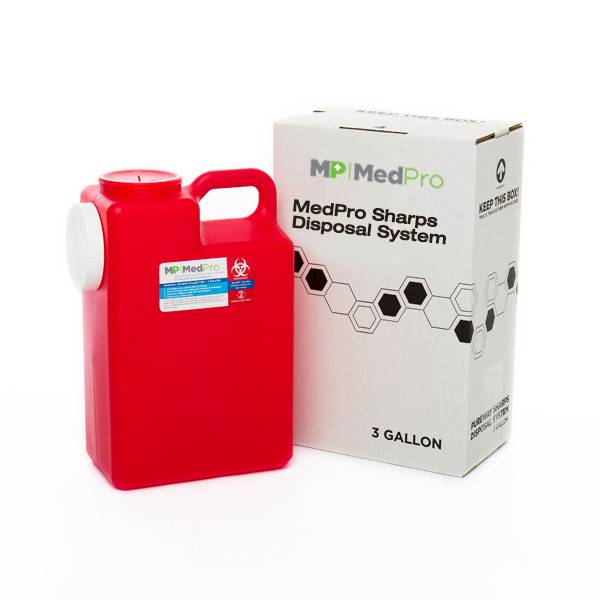If your practice generates even a small amount of medical waste, you’re most likely aware of the myriad local and federal regulations that go along with said waste. The number of workplace and environmental safety guidelines are staggering. About the only thing more daunting to try and keep up with are the ever-changing Meaningful Use criteria. But that’s a post for another day…
In this article, we’ll focus on mailback medical waste so you can remain compliant.
How Does Mailback Medical Waste Disposal Work?
The process of mailback disposal is fairly simple when you work with a medical waste disposal company. Your service provider can help you assess whether or not mailback services are the best option for you, as well as what materials you’ll need to get started.
It’s important that you understand the different types of medical waste you may be dealing with, because some must be sorted and packaged differently. Here are some of the most common forms of medical waste that may be mailed.
Sharps Medical Waste
Sharps include items such as needles, lancets, syringes, orthodontic wires, scalpels, glass, etc. These items can easily cause injury and pose a risk of spreading infectious diseases. Sharps must be sorted into a separate, hard shell and lockable container that is properly labeled.
Soft Medical Waste
Soft medical waste includes, but isn’t limited to, any paper products, gauze, gloves, IV tubing (without needles), patient gowns, bandages with dried blood or body fluids, personal protective equipment, and plastic products.
It should be mentioned that some of the soft medical waste your practice generates may be too hazardous to send through the mail, as every state defines its biohazardous waste criteria differently. Therefore, it’s very important that you let your provider know if you feel any of your soft medical waste might be biohazardous.
Pharmaceutical Waste
You may often find yourself with expired medications, and these cannot simply be tossed into the trash or flushed because they could pose a toxic threat to people, animals, and the environment. Some pharmaceuticals are even legally required to undergo treatment before disposal.
Mailback services are the perfect, cost-effective solutions for practices with pharmaceutical waste.
Dental Amalgam Waste
Dental amalgam is a material used in fillings and is commonly referred to as a silver filling. But, because dental amalgam contains liquid mercury, it poses a threat to those exposed to it and, like prescription medication, may not be thrown out in regular trash.
The Easy 4-Step Mailback Process
Your medical waste management company will provide you with the correct materials needed to store and ship your waste. Once you have these materials, you are ready to begin the medical mailback disposal process.
Step 1: Sort and Collect
Along with the proper materials, your disposal company will also provide you with detailed instructions on the types of waste to be placed in each receptacle. It’s important that you adhere to all guidelines and recommendations. Failure to do so can result in violations and hefty fines.
Step 2: Package Your Waste Container
The most important thing to mention about step two of the mailback process is to make sure all of your medical waste is properly labeled.
Step 3: Complete the Destruction Manifest
These forms ensure compliance and also help you keep track of your service history. You will need to fill out, sign and be sure to keep your customer copies organized.
Step 4: Ship
The great thing about mailback programs is that you can keep filling up your container for as long as you need to until it is completely full. For smaller practices, this can save money as you won’t be scheduling regular pickups for a small removal of trash.
Most businesses outsource this service because it is more cost-effective to let an expert handle it rather than allocate valuable resources trying to do it alone. Medical waste disposal procedures are difficult to follow—fortunately, MedPro Disposal offers affordable, flexible solutions.



